Washington, DC, 25 June 1942. This is the first production model Launcher, Rocket, 2.36 in. M1, along with its sharp nosed and long finned M6 high explosive, anti-tank rocket. Distinctive features from front to rear include ladder type front sights on both sides of the launch tube, a swinging rear sight that moves to the left or right side as dictated by gunner preference, two wooden grips and shoulder stock, a SAFE/FIRE Control Box on the top, and rocket retaining clip. This first model rocket has an electricity-conducting copper band around the warhead that, when properly loaded in the launcher, is touched by a spring loaded plunger extending down from the Control Box when the selector lever is moved to the FIRE position, completing the firing circuit. (National Archives)
By Robert Bruce
“In September of 1942 a ship from America docked at Suez with some highly secret cargo – 600 bazookas, the first the men in the theater had seen. Then known only under the code name THE WHIP, the bazooka (so called because of its resemblance to a musical instrument improvised by a popular radio comedian of the time) was a shoulder projector launching an effective 2.36 inch antitank rocket. For the first time in history a foot soldier had a weapon specifically designed to penetrate armor.” (On Beachhead and Battlefront)
While RKIs (reasonably knowledgeable individuals) contend that the WW1 German 13mm/.53 caliber T-Gewehr 1918 antitank rifle likely holds this specific “first time in history” distinction, THE WHIP went far beyond its Prussian predecessor’s tank-punching prowess.
Readily carried and fired by one man and utilizing a demonically effective anti-armor warhead, the American “Bazooka” as it was oddly and colorfully nicknamed, was loved by GIs, feared, hated and copied by enemies, and officially acclaimed as the “only really revolutionary new American weapon that got overseas in time for widespread use…”
The fascinating story of how this shoulder fired stove pipe and its revolutionary rocket came into being in record time is one that includes many worthy men but is centered on the dogged determination of one extraordinary individual.
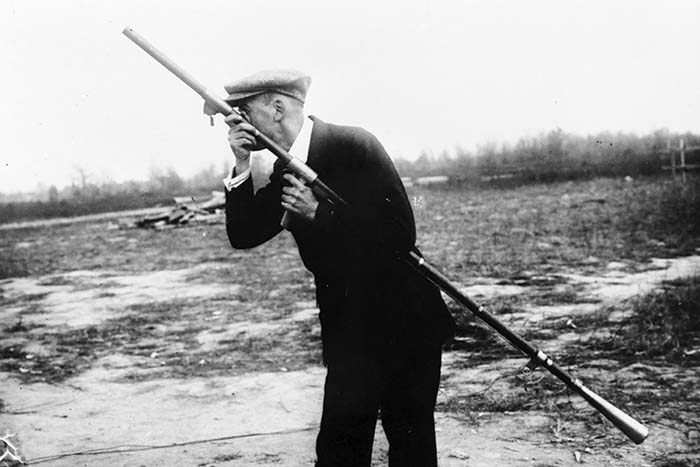
One Man Rocket Research Bureau
“In 1933 the U.S. Army created a one-man rocket unit by assigning Capt. Leslie A. Skinner to study the possible use of rockets. Skinner was handicapped by limited funds to expend on research and by the indifference of his fellow officers. Hence, before 1940, the project made little headway.” (Planning Munitions for War)
While this type of benign neglect is all too sadly familiar to weapon design visionaries past and present, the turning point for Captain Skinner’s quest came with Germany’s rearmament and subsequent aggression against its European neighbors.
Blitzkrieg – literally “lightning War” – was Hitler’s enormously effective tactic, using large concentrations of tanks to consistently overwhelm and defeat defending armies. This was first proven successful in the invasion of Poland in September 1939 and repeatedly afterward.
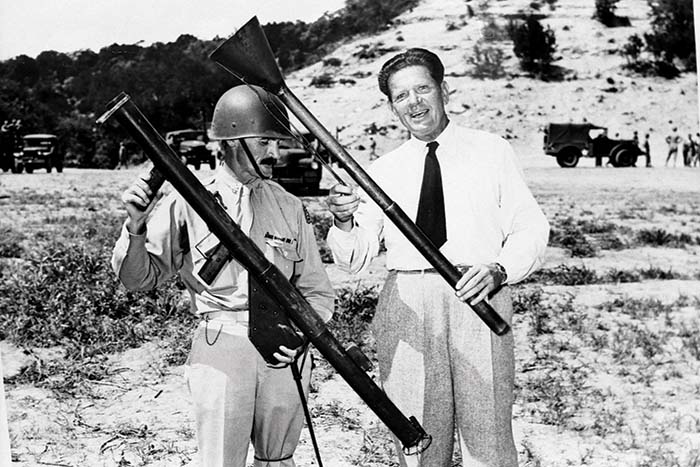
Anti-tank artillery was well developed at the time but Germany’s fast-moving armored formations repeatedly defied attempts by defenders to effectively position the heavy guns. Conventionally armed infantry units, too often alone at the point of Blitzkrieg strikes, were essentially defenseless.
Thus necessity, it has been so sagely observed, is the mother of invention of the first man-portable weapon that would enable American foot soldiers to stop Hitler’s tanks when the U.S. was inevitably drawn into the Europe’s war.
Munroe, Mohaupt and Moore
“The principle of the shaped charge was promulgated by physicist C.E. Munroe as early as 1880, when he discovered that shaping high explosive with a hollow cone at its forward end focused the explosive waves on one point and thus gave greater penetration per unit weight of the explosive. The innovation embodied in the bazooka lay in the combination and adaptation of these well-known principles and basic inventions, which imagination and skill converted into a practical new weapon.” (Planning Munitions for War)
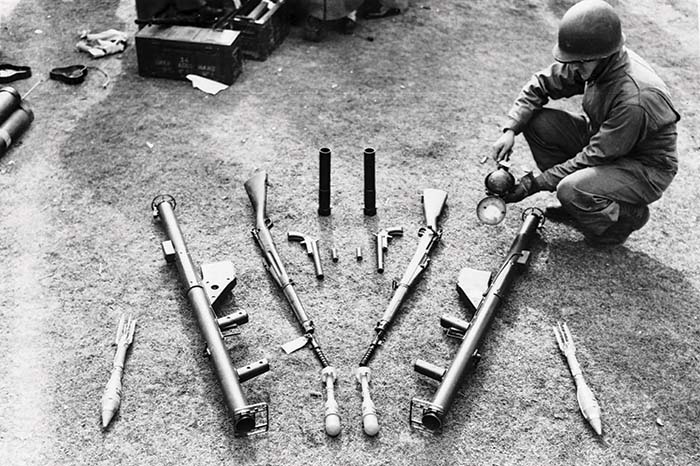
Munroe’s shaped charge – also called “hollow charge” – lay dormant for decades before Henri H. Mohaupt, a clever young Swiss engineer, refined Munroe’s 1911 patent and began attempting to sell his anti-armor
explosive concept.
British tests of his offering, handily packaged in the form of a prototype rifle grenade, caught the eye of American Ordnance personnel. The U.S. M10 rifle grenade soon followed in 1941, with Mohaupt’s improved shaped charge warhead proving remarkably effective for armor penetration.
Alas, it was way too heavy at three pounds, with excessive, weapon-mangling recoil resulting from powerful blanks required to launch it to suitable distances doomed it as a practical infantry arm.
Fortunately, Colonel Gregory J. Kessenich, chief of the Ordnance Department’s Patent Section, had been closely following the project and reportedly had a brainstorm. He persuaded Colonel Wiley T. Moore, head engineer of Ordnance’s Small Arms Division, that putting the M10’s warhead on a suitable rocket would solve both recoil and distance problems.
So far so good, but how would this theoretical anti-armor rocket get launched?
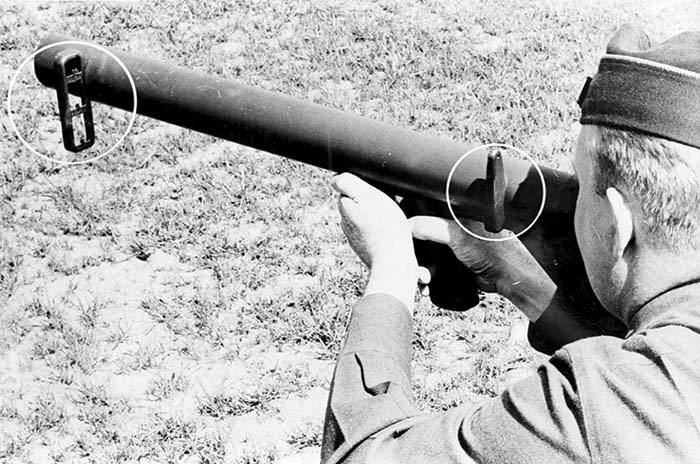
Skinner and Uhl
“American designers who meanwhile were developing small-size missiles that, by embodying the shaped-charge principle, would penetrate great thicknesses of steel plate, likewise failed when they tried to launch them. The recoil induced in weapons based on the conventional principle of internal combustion severely damaging the launching device even when it rested on the ground; firing it from the shoulder was obviously out of the question. The search for a practicable means of getting a shaped-charge missile on its way to the target finally ended when recourse to rocket propulsion eliminated recoil altogether. The launching device, the bazooka, was merely a tube, open at both ends, that fired an electrically triggered rocket. While the new weapon has less accuracy and range than a rifle or machine gun, it lent the individual soldier hitting power heretofore possible only with artillery guns.” (Planning Munitions for War).
Colonel Moore gave Kessenich the green light to turn over his preliminary work to Skinner, soon promoted to Major, whose one man rocket research bureau had grown twofold in June of 1941 with fortuitous addition of Lieutenant Edward G. Uhl, quickly proving to be gifted, intelligent, energetic and resourceful.
Skinner and Uhl, working closely with specialists at the Navy’s Jet Propulsion Laboratory, the National Defense Research Committee (NDRC) and Bell Laboratories, carried out a series of increasingly encouraging tests using crude experimental rockets made by Skinner in his basement workshop.
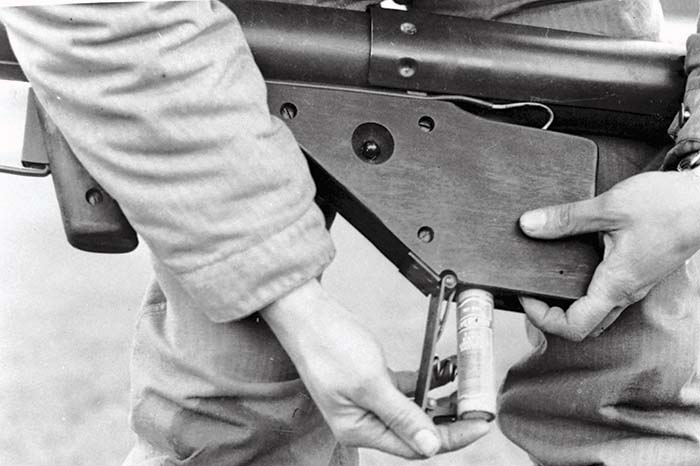
One of these was configured to use a Springfield rifle’s long bayonet as a launching rail, apparently before Dr. Robert Goddard’s steel pipe “recoilless gun” from 1918 was reinvented as the best way to contain and guide the rocket without stunning or frying the gunner.
In the spring of 1942, Lieutenant Colonel W.T. Moore, another key mentor in the quest, presented the team with the T1 launcher, hastily built at Frankford Arsenal based on Skinner’s sketches and a rough prototype that Uhl, recently awarded the rank of Captain, had made.
The T1 was a slim steel tube with its 54 inch length dictated by the usual ignition-to-burnout time of the experimental rockets, featuring a wooden stock and electrical triggering grip, all closely resembling what was to follow. Along with the launcher came a supply of factory built parts to convert existing supplies of the 2.36 inch diameter M10 shaped charge grenade into a rocket.
The stage was set for what was soon to prove to be a wildly successful debut performance.

Do or Die?
As Skinner tells it in his 1944 article for the professional journal ARMY ORDNANCE and repeated in the Army‘s official history of the Ordnance Dept. in WWII, first firings of the new T1 launcher and its rocket grenade combo took place just one day ahead of a make-or-break demo in May 1942.
We learn from these that no small amount of courage was required on the part of the junior member of the team as premature detonations had no doubt been observed in earlier testing of the various rockets. Horrible injury or even death were very real possibilities.
Wisely, Uhl apparently improvised and donned some necessarily serious but comically appearing safety apparel before touching off the rudimentary rig.
Also, the arsenal-built launcher had everything needed except for a sight…
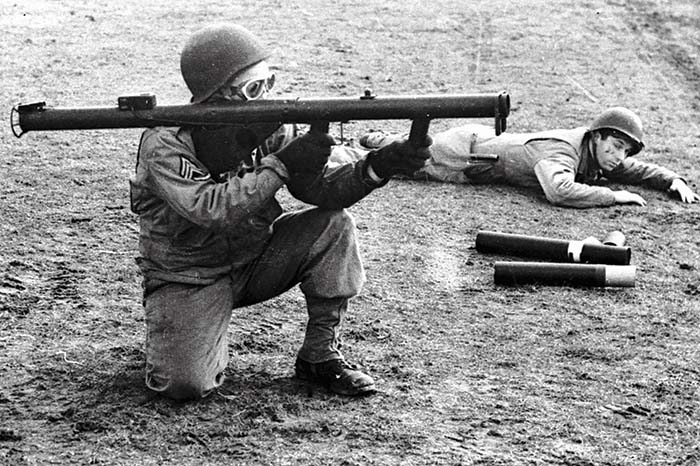
“Captain Uhl, dressed like ‘The man from Mars,’ fired the first rocket from his shoulder at the test ground of NDRC, and the next day demonstrated launcher and rockets at Aberdeen Proving Ground. He improvised a sight by using a piece of nail found on the ground. The new weapon was christened that day: its resemblance to the comedian Bob Burns’ bazooka led the colonel who fired some of the rockets to dub the device the ’bazooka.’ The name stuck.” (Planning Munitions for War)
Interestingly, Skinner doesn’t name “the colonel” who gave the weapon its colorful, immediately adopted and soon universally known nickname that was based on a zany musical instrument of the time. But our bet is on Colonel W.T. Moore who had facilitated building the T1 that was fired that day.
The ranking attendee at the Aberdeen event was Ordnance Major General G. M. Barnes, who was said to have been understandably impressed by Uhl scoring repeated hits with dummy warhead rockets on a moving tank. It is likely that Barnes’ favorable report quickly led to the newly-christened Bazooka’s next hurdle, a command performance for the U.S. Army‘s Chief of Staff, a four star General.
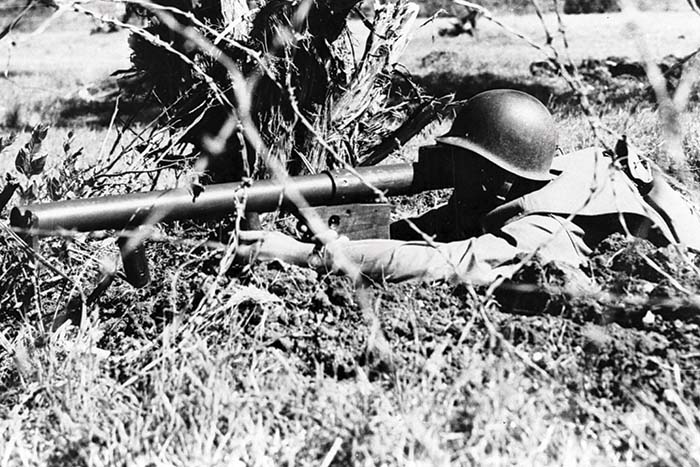
“A few days later a formal demonstration was held at Camp Sims, D.C., when high-ranking officials of the War and Navy Departments, Allied governments, and NDRC witnessed the real thing in action against a medium tank. British observers now opened negotiations for samples and Russian military staff members present at this trial immediately requested that they be supplied with some of the new launchers even though development was still in progress. General Marshall at once issued verbal orders that 5,000 launchers and 25,000 anti-tank and 5,000 practice rockets be procured.” (Planning Munitions for War)
While this kind of fast tracking is every armaments inventor’s dream, it must have been a nightmare for contract writing bureaucrats and for the “lucky” companies that got the super rush orders to build the damn things.
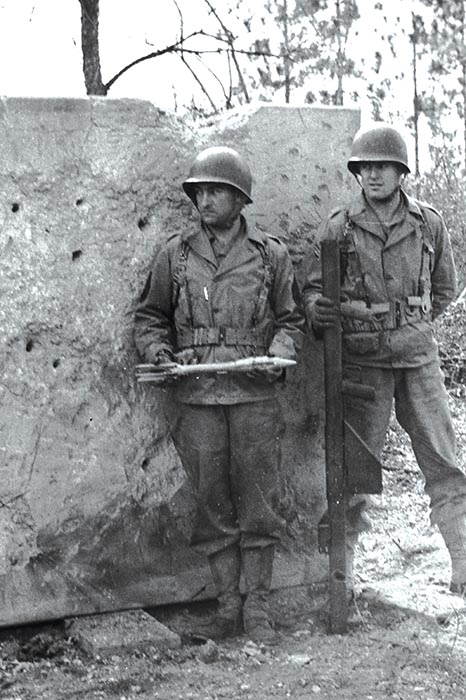
Fortunately, the very large and fully capable firm General Electric got the nod for launchers to fire freshly standardized M6 rockets being made simultaneously by the E.G. Budd Company. At a frenzied pace dictated by desperate wartime necessity, GE got only 30 days to prototype, test and manufacture the full order, delivering the final batch with just eighty-nine minutes to spare.
GE’s success with the initial M1 model and subsequent M1A1 was rewarded by follow-on contracts totaling more than 450,000 of these by war’s end.
(Editor’s Note: Part 2 will pick up the saga with urgently necessary improvements to the 1st production model Bazookas and how rocket launched shaped charge warheads were cleverly adopted, first by the Germans and then by the Soviets.)
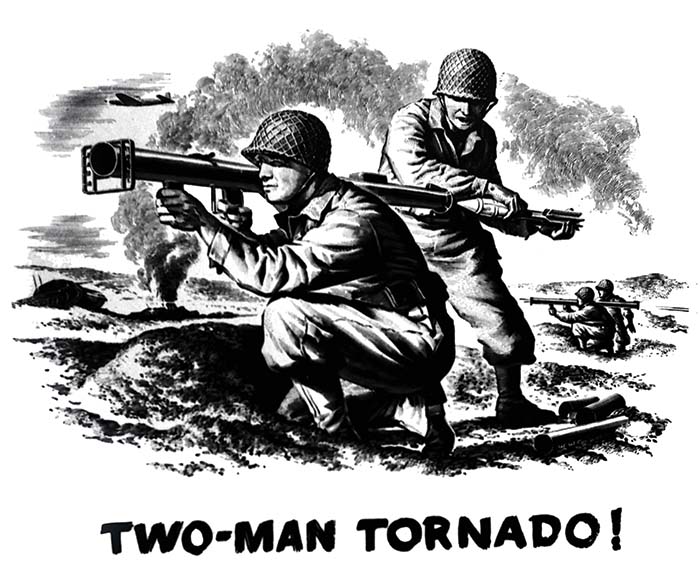
| This article first appeared in Small Arms Review V19N9 (November 2015) |










